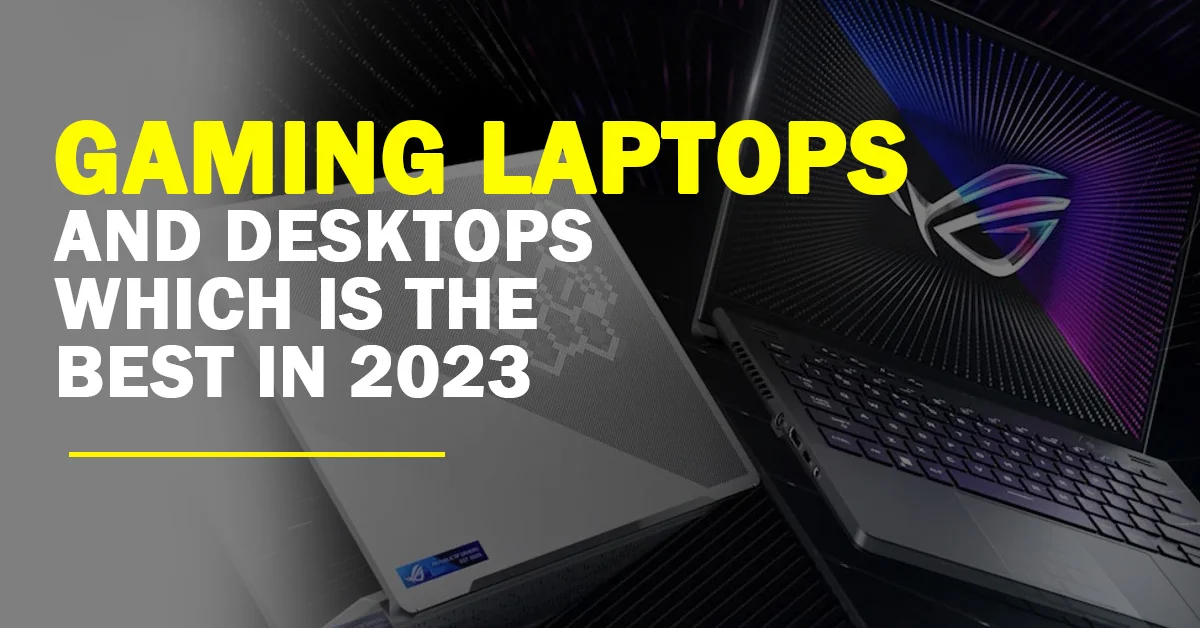
Table of Contents
ToggleIntroduction
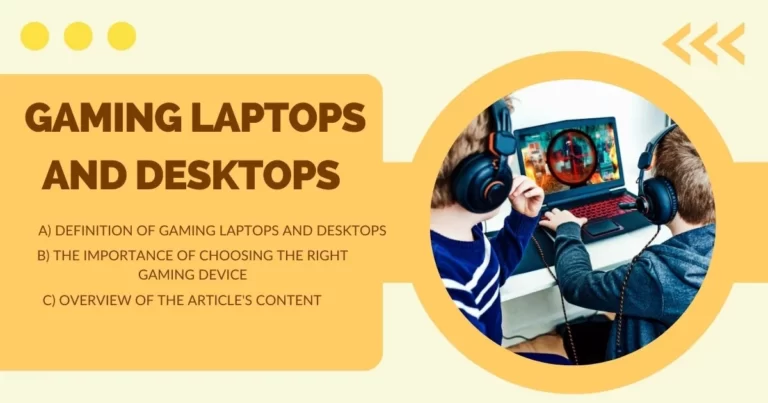
a) Definition of gaming laptops and desktops
Gaming laptops and desktops are high-performance computers specifically designed to run and support video games. They usually come equipped with powerful processors, dedicated graphics cards, ample memory (RAM), and fast storage options to handle the demanding requirements of modern gaming. Gaming laptops are portable and compact, while gaming desktops are typically larger and offer more customization and upgradability.
Selecting the right gaming device is essential for an enjoyable gaming experience. The ideal device should cater to your gaming preferences, budget, and performance requirements. By choosing the right gaming laptop or desktop, you can ensure smooth gameplay, faster load times, and a more immersive gaming experience. Additionally, the right device can provide better longevity and adaptability as gaming technology continues to evolve.
b) The importance of choosing the right gaming device
Selecting the right gaming device is essential for an enjoyable gaming experience. The ideal device should cater to your gaming preferences, budget, and performance requirements. By choosing the right gaming laptop or desktop, you can ensure smooth gameplay, faster load times, and a more immersive gaming experience. Additionally, the right device can provide better longevity and adaptability as gaming technology continues to evolve.
c) Overview of the article's content
This article discusses the pros and cons of gaming laptops and desktops, guiding you through the process of choosing the right gaming laptops. It covers essential components, such as processors, graphics cards, memory, storage, and displays, along with peripherals like keyboards, mice, and audio equipment. The article also lists some of the best gaming laptops and desktops on the market, provides tips for building a custom gaming PC, and offers advice on maintenance and frequently asked questions.
In today’s technology-driven world, gaming has become a popular pastime for people of all ages. With the rise of esports and the rapid evolution of gaming technology, there is an increasing demand for high-performance gaming devices. This article will explore the world of gaming laptops and desktops, discussing the pros and cons of each, and provide you with all the information you need to make an informed decision about which one is right for you.
II. Gaming Laptops vs Desktops: The Pros and Cons
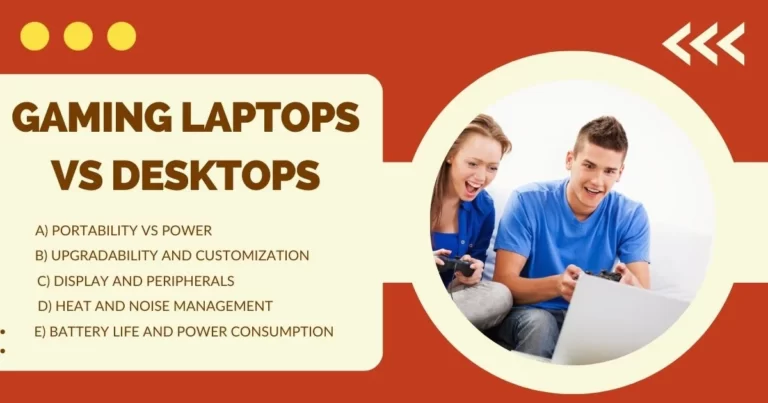
a) Portability vs power
Gaming laptops offer portability, allowing you to game on the go, whereas gaming desktops provide more power and performance. Laptops are compact and lightweight, making them ideal for gamers who frequently travel or have limited space. However, due to their size, they often have to compromise on performance compared to desktops, which can accommodate more powerful components.
b) Upgradability and customization
Gaming desktops have a clear advantage in upgradability and customization. Desktops typically come with spacious cases that can accommodate additional components, making it easier to upgrade individual parts like the graphics card, processor, or RAM. Gaming Laptops, on the other hand, are more limited in terms of upgradability due to their compact design, often allowing only RAM and storage upgrades.
c) Display and peripherals
Gaming Desktops offer more flexibility when it comes to display options and peripherals, as you can choose from a wide variety of monitors, keyboards, mice, and other accessories to suit your preferences. Gamimng Laptops, however, come with built-in displays and keyboards, which might not always meet your specific needs. Nevertheless, you can still connect external peripherals and monitors to a laptop for a more personalized gaming experience.
d) Heat and noise management
Gaming desktops generally have better heat and noise management due to their larger cases and more efficient cooling systems. This allows for higher performance without significant thermal throttling or excessive noise. Gaming Laptops, with their smaller form factor, tend to struggle with heat dissipation, leading to higher temperatures and potentially louder fans during intensive gaming sessions.
e) Battery life and power consumption
Gaming laptops come with built-in batteries, allowing for gaming sessions without being tethered to a power outlet. However, gaming laptops’ battery life tends to be relatively short when running demanding games, as powerful components consume more energy. Desktops, on the other hand, don’t have built-in batteries and require a constant power source, but they generally consume more power overall due to their higher-performing components.
When it comes to choosing between a gaming laptop and a desktop, there are several factors to consider. Gaming laptops offer the convenience of portability, allowing you to game on-the-go, while desktops generally provide more power and better performance. However, gaming desktops are more customizable and upgradable than laptops, which is an essential aspect for many gamers.
III. Choosing the Right Processor for Gaming
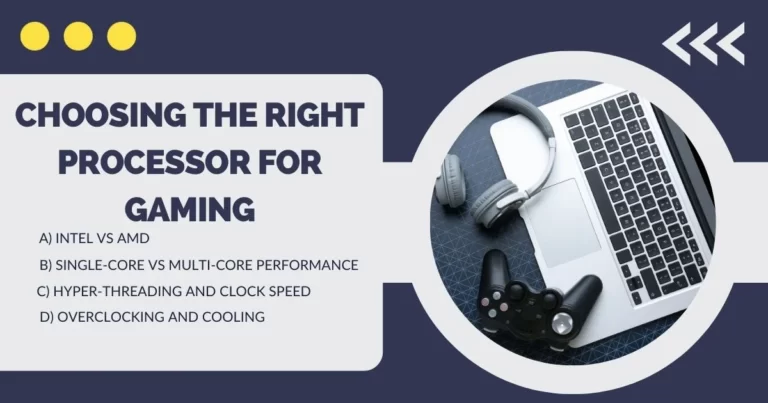
a) Intel vs AMD
Intel and AMD are the two major players in the processor market for gaming laptops and desktops. Both companies offer a range of processors with varying performance levels and price points. Intel has traditionally been known for its high single-core performance, while AMD has gained a reputation for delivering excellent multi-core performance and better price-to-performance ratios. The choice between Intel and AMD often comes down to personal preference, budget, and the specific gaming requirements.
b) Single-core vs multi-core performance
Single-core performance refers to how fast a single core of the processor can execute tasks, while multi-core performance measures the combined processing power of multiple cores working together. Many modern games and applications can take advantage of multi-core processors, but some older or less-optimized games might still rely on strong single-core performance. Depending on the types of games you play, it’s important to consider both single-core and multi-core performance when choosing a processor.
c) Hyper-threading and clock speed
Hyper-threading is a technology that allows each processor core to handle two threads simultaneously, effectively doubling the number of tasks the processor can handle at once. This can lead to improved performance in multi-threaded applications and games. Clock speed, measured in gigahertz (GHz), indicates the speed at which a processor can execute instructions. A higher clock speed generally translates to better performance, but other factors, such as architecture and power efficiency, also play a role.
d) Overclocking and cooling
Overclocking is the process of increasing a processor’s clock speed beyond its factory settings to achieve higher performance. However, overclocking can also generate more heat and potentially reduce the lifespan of the processor if not managed correctly. Adequate cooling is essential when overclocking, as it helps maintain safe temperatures and prevent thermal throttling. Cooling solutions range from air coolers to more advanced liquid cooling systems, depending on the level of overclocking and desired noise levels.
The processor is the heart of your gaming device, and choosing the right one is crucial for a smooth gaming experience. Intel and AMD are the two main players in the processor market, each with its own set of advantages and disadvantages. Performance-wise, multi-core processors are generally better for gaming, while hyper-threading and high clock speeds are also important factors to consider.
IV. Selecting the Best Graphics Card for Gaming
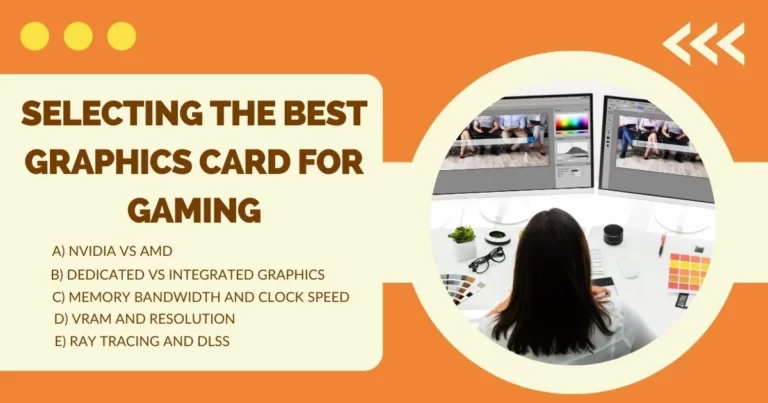
a) Nvidia vs AMD
Nvidia and AMD are the two main competitors in the graphics card market. Both companies offer a wide range of graphics cards suited for different gaming needs and budgets. Nvidia is often associated with cutting-edge technology and high-performance cards, while AMD is known for its competitive pricing and excellent price-to-performance ratios. The choice between Nvidia and AMD depends on your gaming requirements, budget, and brand preference.
b) Dedicated vs integrated graphics
Dedicated graphics cards are separate components designed specifically for handling graphics-related tasks, providing superior performance and visuals for gaming. Integrated graphics, on the other hand, are built into the processor and share system resources, such as RAM. While integrated graphics have improved significantly over the years, they still lag behind dedicated graphics cards in terms of performance, making dedicated cards the preferred choice for gaming.
c) Memory bandwidth and clock speed
Memory bandwidth refers to the speed at which a graphics card can read from and write to its video memory (VRAM), which affects the overall performance. A higher memory bandwidth generally results in faster and smoother gaming experiences. Clock speed, measured in megahertz (MHz), indicates the speed at which the graphics card’s GPU can execute instructions. Higher clock speeds can lead to better performance, but other factors, such as architecture and power efficiency, also play a role.
d) VRAM and resolution
Video RAM (VRAM) is the dedicated memory used by a graphics card to store and process graphics data. The amount of VRAM required depends on the resolution and graphical settings of the games you play. Higher resolutions and more demanding graphical settings typically require more VRAM. As a general rule, 4GB of VRAM is suitable for 1080p gaming, while 8GB or more is recommended for gaming at 1440p or 4K resolutions.
e) Ray tracing and DLSS
Ray tracing is a rendering technique that simulates realistic lighting and reflections in games, providing more immersive and visually stunning gaming experiences. Nvidia’s Deep Learning Super Sampling (DLSS) is an AI-driven technology that upscales lower-resolution images to higher resolutions using machine learning, allowing for better performance at high resolutions without sacrificing visual quality.
Both ray tracing and DLSS are currently more widely supported on Nvidia’s graphics cards, although AMD has introduced its own ray tracing and upscaling technologies, like FidelityFX Super Resolution (FSR). The graphics card is responsible for rendering the visuals in your games, and it is another critical component of your gaming setup. Nvidia and AMD both offer powerful options, with dedicated graphics cards generally providing better performance than integrated ones. Factors such as memory bandwidth, clock speed, VRAM, and resolution are essential to consider when choosing a graphics card for gaming.
V. Memory (RAM) Requirements for Gaming
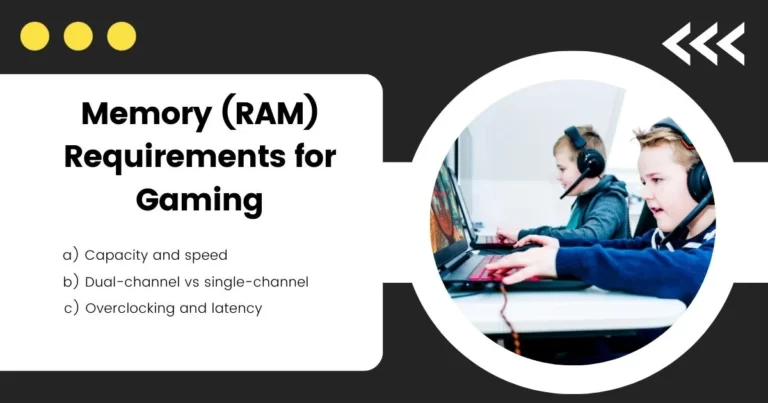
a) Capacity and speed
RAM capacity and speed play crucial roles in ensuring smooth gaming performance. Capacity refers to the amount of memory available for the system to use. Modern games typically require at least 8GB of RAM for optimal performance, but 16GB or more is recommended for high-end gaming and multitasking. RAM speed, measured in megahertz (MHz), affects the rate at which data can be accessed and processed. Faster RAM can lead to quicker load times and improved overall performance, especially in memory-intensive games.
b) Dual-channel vs single-channel
Dual-channel and single-channel memory configurations refer to how RAM modules are installed on the motherboard. In a dual-channel configuration, two or more RAM modules are installed in pairs, allowing the system to access both modules simultaneously, effectively doubling the memory bandwidth. This can result in improved performance compared to a single-channel configuration, where only one RAM module is installed, or multiple modules are installed without utilizing the dual-channel feature.
c) Overclocking and latency
Overclocking RAM involves increasing its speed beyond the factory settings, potentially leading to better performance in certain scenarios. However, overclocking can also increase power consumption and heat output, requiring adequate cooling and potentially affecting the system’s stability. Latency, measured in clock cycles (CL), refers to the time it takes for the RAM to respond to a request from the processor. Lower latency means faster response times, but it often comes at the cost of lower RAM speeds. Balancing speed and latency when overclocking is essential for achieving optimal performance.
Memory (RAM) plays a vital role in gaming performance, allowing for smooth gameplay and quick load times. It is important to consider the capacity and speed of RAM for your gaming device, as well as the benefits of dual-channel over single-channel memory. Overclocking and latency are also significant factors to keep in mind.
VI. Storage Options for Gaming
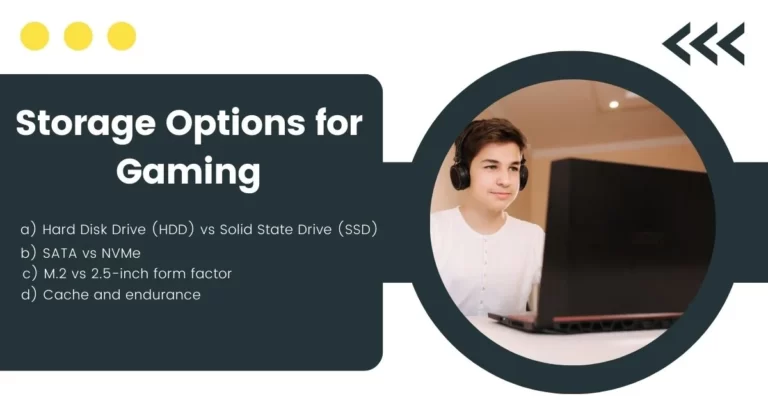
a) Hard Disk Drive (HDD) vs Solid State Drive (SSD)
Hard Disk Drives (HDDs) and Solid State Drives (SSDs) are the two primary types of storage devices used in gaming laptops and desktops. HDDs use spinning magnetic disks to store data, while SSDs use NAND flash memory. SSDs offer significantly faster read and write speeds compared to HDDs, resulting in shorter load times, faster file transfers, and an overall snappier system. However, SSDs tend to be more expensive per gigabyte than HDDs. Many gamers opt for a combination of both, using an SSD for the operating system and frequently-used games and an HDD for mass storage.
b) SATA vs NVMe
SATA (Serial ATA) and NVMe (Non-Volatile Memory Express) are two interfaces used for connecting storage devices to a computer. SATA is an older interface primarily used for HDDs and 2.5-inch SSDs, offering speeds of up to 600 MB/s. NVMe, on the other hand, is a more recent interface designed specifically for SSDs, utilizing the faster PCIe (Peripheral Component Interconnect Express) bus to deliver speeds of up to 7,000 MB/s or more. NVMe SSDs are the preferred choice for gaming due to their superior performance.
c) M.2 vs 2.5-inch form factor
M.2 and 2.5-inch form factors refer to the physical sizes and shapes of storage devices. M.2 SSDs are small, slim modules that connect directly to the motherboard, while 2.5-inch SSDs and HDDs are larger, rectangular devices that require a separate drive bay and cables. M.2 SSDs are more compact and offer faster speeds when using the NVMe interface, making them ideal for gaming laptops and desktops with limited space.
d) Cache and endurance
The cache is a small, fast memory buffer used by storage devices to temporarily store frequently accessed data, improving performance. A larger cache can result in faster read and write speeds, especially for frequently-used files and applications. Endurance, on the other hand, refers to the lifespan of an SSD, measured in terabytes written (TBW) or drive writes per day (DWPD). SSDs have a finite number of write cycles, so higher endurance means a longer-lasting drive.
When choosing an SSD for gaming, consider both cache size and endurance to ensure optimal performance and reliability.
Storage is essential for housing your games, applications, and files. When choosing between an HDD and SSD, it is important to weigh the benefits and drawbacks of each. SSDs are faster and more durable, but they tend to be more expensive. Additionally, understanding the differences between SATA and NVMe, as well as M.2 and 2.5-inch form factors, can help you make an informed decision.
VII. Display Features for Gaming

a) Resolution and refresh rate
Resolution refers to the number of pixels displayed on a screen, with higher resolutions providing sharper and more detailed images. Common resolutions for gaming include 1080p (Full HD), 1440p (Quad HD), and 2160p (4K). The choice of resolution depends on your graphics card, display, and personal preference. Refresh rate, measured in hertz (Hz), indicates the number of times the screen updates the image per second.
Higher refresh rates (e.g., 120 Hz, 144 Hz, or 240 Hz) provide smoother gaming experiences and can reduce motion blur, making them ideal for fast-paced games. However, higher refresh rates require more powerful graphics cards to maintain consistent frame rates.
b) Panel type and size
There are three main types of display panels used in gaming monitors: IPS (In-Plane Switching), VA (Vertical Alignment), and TN (Twisted Nematic). IPS panels offer the best color reproduction and viewing angles but may have slower response times than TN panels. VA panels provide a balance between color accuracy and response time, with better contrast ratios than IPS and TN panels.
TN panels are known for their fast response times but have inferior color reproduction and viewing angles. The choice of panel type depends on your gaming priorities and budget. As for size, larger displays can provide more immersive gaming experiences, but they also require more desk space and may have lower pixel density at the same resolution compared to smaller displays.
c) Response time and input lag
Response time, measured in milliseconds (ms), indicates the time it takes for a pixel to change from one color to another. Faster response times (e.g., 1ms, 2ms) reduce motion blur and ghosting, which is essential for fast-paced games. Input lag refers to the delay between an input (e.g., pressing a button on the keyboard or moving the mouse) and the corresponding action appearing on the screen. Lower input lag results in more responsive gameplay, giving you a competitive edge in multiplayer games. Monitors with low response times and input lag are ideal for gaming.
d) G-Sync vs FreeSync
G-Sync (Nvidia) and FreeSync (AMD) are adaptive sync technologies that synchronize the refresh rate of a display with the frame rate output of a graphics card, reducing screen tearing and stuttering for smoother gaming experiences. G-Sync is exclusive to Nvidia graphics cards and typically found in more expensive monitors, while FreeSync is an open standard supported by both Nvidia and AMD graphics cards and is more widely available. Choosing between G-Sync and FreeSync depends on your graphics card and budget, but both technologies offer significant improvements over traditional fixed refresh rate displays.
The display is a crucial aspect of the gaming experience, and understanding the various features is important. Resolution and refresh rate are key factors in determining image quality and smoothness, while panel type and size can affect the overall look and feel of the display. Response time and input lag are important considerations for competitive gaming, and technologies like G-Sync and FreeSync help reduce screen tearing and improve overall gaming performance.
VIII. Keyboard, Mouse, and Controller for Gaming
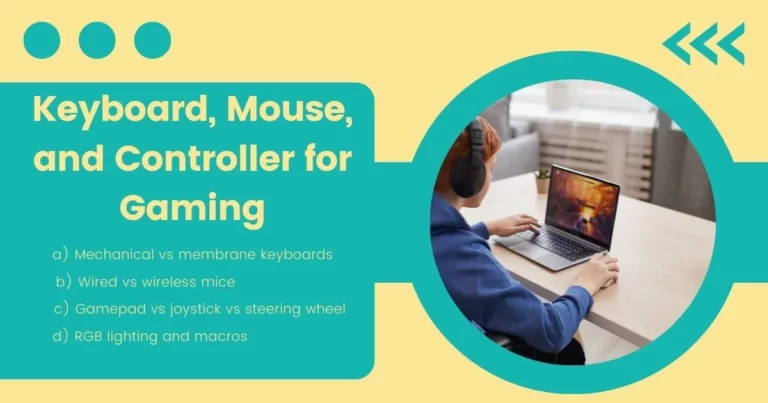
a) Mechanical vs membrane keyboards
Mechanical keyboards use individual mechanical switches beneath each key, providing tactile feedback and faster, more accurate key presses. These keyboards are more durable and often preferred by gamers for their responsiveness and customization options. Membrane keyboards, on the other hand, use a rubber dome and a conductive layer beneath the keys. They are typically quieter, lighter, and more affordable than mechanical keyboards but offer less tactile feedback and a shorter lifespan. The choice between mechanical and membrane keyboards depends on personal preferences, budget, and gaming needs.
b) Wired vs wireless mice
Wired mice connect directly to the computer via a USB cable, offering a reliable connection and virtually no input lag. Wireless mice use Bluetooth or a USB receiver for connectivity, providing more freedom of movement and a cleaner desk setup. However, they may have slightly higher input lag and require batteries for power. Modern wireless gaming mice have made significant improvements in input lag and battery life, making them a viable option for gamers who value mobility and aesthetics.
c) Gamepad vs joystick vs steering wheel
Gamepads, joysticks, and steering wheels are all types of gaming controllers, offering different control schemes for various types of games. Gamepads are versatile and suitable for a wide range of games, including platformers, action-adventure games, and sports titles. Joysticks are primarily used for flight simulators and space combat games, providing precise control and immersion. Steering wheels are designed for racing and driving simulators, offering realistic and accurate control for an immersive experience. The choice of controller depends on the types of games you play and your personal preferences.
d) RGB lighting and macros
RGB lighting is a popular feature in gaming peripherals, allowing users to customize the colors and effects of their devices for aesthetics and personalization. While RGB lighting does not directly impact gaming performance, it can enhance the overall gaming experience and make your setup more visually appealing. Macros are programmable shortcuts that allow users to execute a series of commands or actions with a single keypress. These can be especially useful in games with complex controls or for automating repetitive tasks. Many gaming keyboards and mice offer dedicated macro keys and software for easy customization, providing an added level of convenience and functionality.
Selecting the right peripherals can greatly enhance your gaming experience. Mechanical keyboards are typically preferred by gamers due to their responsiveness and durability, while the choice between wired and wireless mice often depends on personal preference. Gamepads, joysticks, and steering wheels provide different levels of immersion and control for various game genres. Additionally, RGB lighting and macros can add personalization and functionality to your gaming setup.
IX. Audio Quality for Gaming

a) Headset vs speakers
Headsets and speakers serve different purposes when it comes to gaming audio. Headsets provide an immersive, personal listening experience with the added benefit of a built-in microphone for voice communication. They are especially useful for competitive gaming, where clear communication with teammates is essential. Speakers, on the other hand, offer a more open and room-filling sound, ideal for casual gaming or sharing the experience with others. The choice between a headset and speakers depends on your gaming environment, personal preferences, and whether you require voice communication.
b) surround sound vs stereo
surround sound systems use multiple speakers (or virtual channels in the case of headsets) to create a more immersive and directional audio experience. This can help gamers pinpoint the location of in-game sounds, such as footsteps or gunfire, providing a competitive advantage in multiplayer games. Stereo systems use two channels (left and right) and are generally more straightforward and affordable. While stereo setups can still provide excellent audio quality, they may not offer the same level of immersion and positional awareness as 7.1 surround sound systems. The choice between 7.1 surround sound and stereo depends on your gaming needs, budget, and preference for immersion.
c) Frequency response and impedance
Frequency response refers to the range of frequencies a speaker or headset can reproduce, measured in hertz (Hz). A wider frequency response typically results in more accurate and detailed sound reproduction. For gaming, a frequency response of 20 Hz to 20,000 Hz is generally considered adequate. Impedance, measured in ohms (Ω), refers to the resistance of a speaker or headset to the electrical current passing through it.
Lower impedance devices (e.g., 32 Ω) require less power and are more suitable for use with portable devices, while higher impedance devices (e.g., 250 Ω) often require a dedicated amplifier for optimal performance. When selecting audio equipment for gaming, consider the frequency response and impedance based on your sound source and desired audio quality.
d) Noise cancellation and mic quality
Noise cancellation is a feature found in some gaming headsets that helps reduce background noise, providing a clearer audio experience for both listening and voice communication. Active noise cancellation uses electronic circuitry to analyze and counteract external noise, while passive noise cancellation relies on the physical design and materials of the headset to block out noise. Mic quality is also essential for voice communication in multiplayer games, with higher-quality microphones providing clearer and more accurate voice reproduction. When selecting a gaming headset, consider noise cancellation features and mic quality based on your gaming environment and communication needs.
Audio quality can greatly impact your gaming experience, immersing you in the game world and providing vital audio cues. Choosing between a headset and speakers depends on your personal preferences and gaming environment. Surround sound and stereo audio each have their advantages, while factors such as frequency response, impedance, noise cancellation, and mic quality should be considered when selecting an audio solution for gaming.
X. Connectivity and Networking for Gaming

a) Ethernet vs Wi-Fi
Ethernet and Wi-Fi are two methods of connecting your gaming device to the internet. Ethernet connections use a physical cable to connect your device directly to your router or modem, offering a more stable and reliable connection with lower latency and higher data transfer speeds. Wi-Fi connections, on the other hand, use wireless signals to transmit data between your device and the router.
Wi-Fi offers greater mobility and convenience, but may be subject to interference, reduced signal strength, and higher latency compared to Ethernet. For the best gaming experience, an Ethernet connection is generally recommended, although modern Wi-Fi technology has made significant improvements in performance and reliability.
b) LAN vs WAN
LAN (Local Area Network) and WAN (Wide Area Network) are two types of networks used to connect devices. LANs are limited to a specific geographic area, such as a home or office, and provide high-speed connections between devices within that area. WANs cover larger geographic areas, connecting multiple LANs together and providing access to the internet.
In gaming, LAN connections are often used for local multiplayer gaming, offering low latency and high-speed data transfer between devices. WAN connections are used for online gaming, where players connect to remote servers or other players over the internet.
c) QoS and packet loss
QoS (Quality of Service) is a feature found in some routers that prioritizes specific types of network traffic to ensure a smooth and stable connection for latency-sensitive applications like gaming. By prioritizing gaming traffic over other types of data, QoS can help reduce lag and improve the overall gaming experience.
Packet loss occurs when data packets sent over a network fail to reach their destination, resulting in a loss of information and potential disruptions to the gaming experience. Packet loss can be caused by various factors, such as network congestion, hardware issues, or signal interference. To minimize packet loss, consider using an Ethernet connection, enabling QoS on your router, or upgrading your network equipment.
d) Bluetooth and USB ports
Bluetooth is a wireless technology used to connect devices over short distances, such as connecting a wireless headset or controller to your gaming device. Bluetooth offers convenience and mobility but may have slightly higher input lag compared to wired connections. USB ports are found on most gaming devices and serve as a versatile connection option for a wide range of peripherals, such as keyboards, mice, controllers, and external storage. USB ports can also provide power for charging devices and support data transfer between devices. When selecting a gaming device, consider the number and types of USB ports and Bluetooth compatibility based on your peripheral and connectivity needs.
A stable and fast internet connection is essential for online gaming. Ethernet connections usually provide lower latency and higher speeds than Wi-Fi, but the choice may depend on your individual situation. Understanding the differences between LAN and WAN, as well as the importance of Quality of Service (QoS) and packet loss, can help you optimize your gaming experience. Additionally, Bluetooth and USB ports are important for connecting peripherals and accessories.
XI. Best Gaming Laptops on the Market
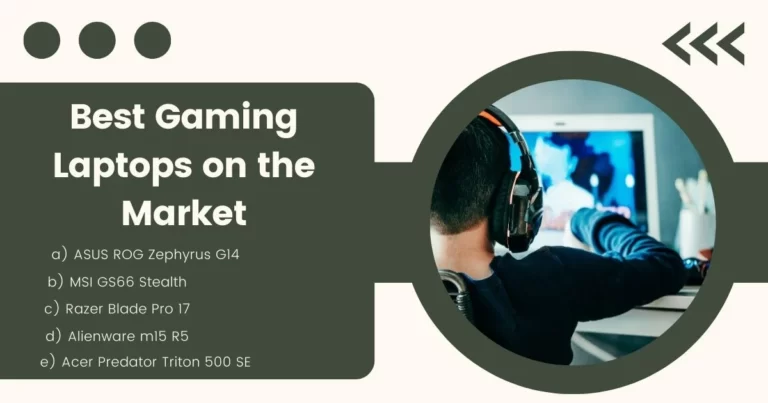
a) ASUS ROG Zephyrus G14
The ASUS ROG Zephyrus G14 is a powerful and portable gaming laptop known for its excellent performance, compact size, and long battery life. It features an AMD Ryzen 9 processor, NVIDIA GeForce RTX 3060 GPU, up to 32GB of RAM, and a 1TB NVMe SSD, ensuring smooth gameplay in modern titles. The 14-inch display is available in either 1080p with a 144Hz refresh rate or 1440p with a 120Hz refresh rate, providing sharp visuals and smooth motion. The Zephyrus G14 is an ideal choice for gamers seeking a balance between performance, portability, and battery life.
b) MSI GS66 Stealth
The ASUS ROG Zephyrus G14 is a powerful and portable gaming laptop known for its excellent performance, compact size, and long battery life. It features an AMD Ryzen 9 processor, NVIDIA GeForce RTX 3060 GPU, up to 32GB of RAM, and a 1TB NVMe SSD, ensuring smooth gameplay in modern titles. The 14-inch display is available in either 1080p with a 144Hz refresh rate or 1440p with a 120Hz refresh rate, providing sharp visuals and smooth motion. The Zephyrus G14 is an ideal choice for gamers seeking a balance between performance, portability, and battery life.
The MSI GS66 Stealth is a sleek, high-performance gaming laptop with a focus on power and aesthetics. It features an Intel Core i9 processor, NVIDIA GeForce RTX 3080 GPU, up to 64GB of RAM, and up to 2TB of NVMe SSD storage. The 15.6-inch display comes with a 300Hz refresh rate and a 3ms response time, ensuring smooth gameplay and minimal input lag. With its customizable RGB keyboard, Thunderbolt 4 support, and advanced cooling system, the MSI GS66 Stealth is well-suited for gamers seeking top-tier performance in a stylish package.
c) Razer Blade Pro 17
The Razer Blade Pro 17 is a premium gaming laptop that combines power, portability, and build quality. It is equipped with an Intel Core i9 processor, NVIDIA GeForce RTX 3080 GPU, up to 32GB of RAM, and up to 2TB of NVMe SSD storage. The 17.3-inch display is available in 1080p with a 360Hz refresh rate or 4K with a 120Hz refresh rate, offering both high-performance and visual fidelity options. With its slim, aluminum chassis, customizable RGB keyboard, and advanced cooling system, the Razer Blade Pro 17 is an excellent choice for gamers who want top-notch performance and build quality in a larger form factor.
d) Alienware m15 R5
The Alienware m15 R5 is a powerful gaming laptop with a distinctive design and a focus on performance. It features an AMD Ryzen 9 processor, NVIDIA GeForce RTX 3070 GPU, up to 32GB of RAM, and up to 4TB of NVMe SSD storage. The 15.6-inch display comes with a 1080p resolution and a 360Hz refresh rate, providing smooth gameplay and low input lag. With its unique “Legend” design, customizable RGB lighting, and advanced Cryo-Tech cooling system, the Alienware m15 R5 is perfect for gamers who want a high-performance laptop with a standout aesthetic.
e) Acer Predator Triton 500 SE
The Acer Predator Triton 500 SE is a gaming laptop that combines performance, portability, and versatility. It features an Intel Core i9 processor, NVIDIA GeForce RTX 3080 GPU, up to 64GB of RAM, and up to 2TB of NVMe SSD storage. The 16-inch display has a 165Hz refresh rate and a 2560×1600 resolution, offering a balance between smooth motion and visual detail. With its slim design, advanced cooling system, and customizable RGB keyboard, the Acer Predator Triton 500 SE is an excellent choice for gamers who need a powerful laptop that can also handle productivity tasks and creative work.
These gaming laptops represent some of the best options available in the market, offering a balance of performance, portability, and features. Each model has its unique advantages, and your choice will depend on your specific needs and preferences.
XII. Best Gaming Desktops on the Market
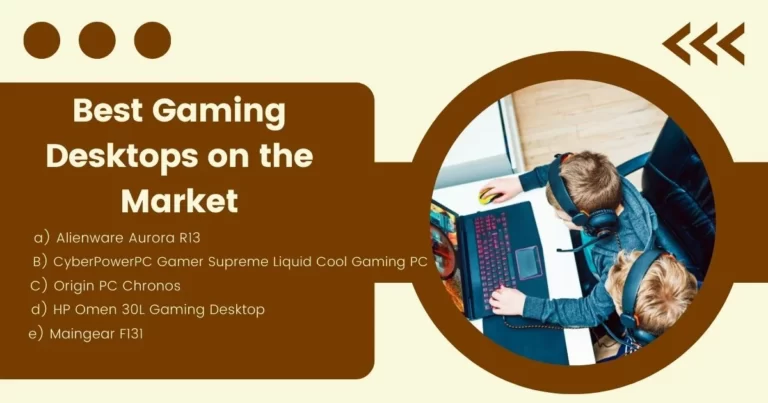
a) Alienware Aurora R13
The Alienware Aurora R13 is a high-performance gaming desktop with a distinctive design and excellent upgradability. It features up to an Intel Core i9 processor, NVIDIA GeForce RTX 3090 GPU, up to 128GB of RAM, and various storage options including NVMe SSDs and HDDs. The unique chassis design offers tool-less access, making it easy to upgrade components in the future. With its advanced AlienFX RGB lighting and efficient cooling system, the Alienware Aurora R13 is perfect for gamers who want a powerful and stylish gaming desktop with room to grow.
b) Origin PC Chronos
The Origin PC Chronos is a custom-built gaming desktop that offers a wide range of performance and aesthetic options. Available with either Intel or AMD processors, NVIDIA or AMD GPUs, and various RAM and storage configurations, the Chronos can be tailored to your specific needs. The compact chassis supports both horizontal and vertical orientations, making it versatile for various setups. With its advanced cooling options, customizable RGB lighting, and premium build quality, the Origin PC Chronos is an excellent choice for gamers seeking a personalized gaming desktop experience.
c) CyberPowerPC Gamer Supreme Liquid Cool Gaming PC
The CyberPowerPC Gamer Supreme Liquid Cool Gaming PC is a pre-built desktop that offers a balance of performance and value. It features an Intel Core i7 processor, NVIDIA GeForce RTX 3070 GPU, 16GB of RAM, and a combination of a 1TB NVMe SSD and a 2TB HDD for storage. The liquid cooling system ensures optimal temperatures during intense gaming sessions, while the customizable RGB lighting adds a touch of personalization. With its solid performance and attractive price point, the CyberPowerPC Gamer Supreme Liquid Cool Gaming PC is ideal for gamers who want a powerful gaming desktop without breaking the bank.
d) HP Omen 30L Gaming Desktop
The HP Omen 30L Gaming Desktop is a high-performance machine that blends power and style. It features up to an Intel Core i9 processor, NVIDIA GeForce RTX 3090 GPU, up to 64GB of RAM, and various storage options including NVMe SSDs and HDDs. The sleek, minimalist design is complemented by customizable RGB lighting and a tempered glass side panel, showcasing the internal components. With its easy upgradability and advanced cooling system, the HP Omen 30L Gaming Desktop is perfect for gamers who want a powerful and stylish gaming desktop that can evolve over time.
e) Maingear F131
The Maingear F131 is a premium custom-built gaming desktop that offers top-tier performance and build quality. Available with either Intel or AMD processors, NVIDIA or AMD GPUs, and various RAM and storage configurations, the F131 can be tailored to your exact specifications. The stunning chassis design features a custom automotive paint finish, customizable RGB lighting, and a tempered glass side panel, showcasing the meticulously crafted internals.
With its advanced cooling options, including the optional APEX liquid cooling system, the Maingear F131 is an excellent choice for gamers who want a high-performance gaming desktop with a truly unique and luxurious aesthetic. These gaming desktops showcase the power and flexibility that desktop gaming offers. Ranging from compact designs to liquid-cooled powerhouses, there is a desktop solution for every type of gamer.
XIII. Custom Building a Gaming PC
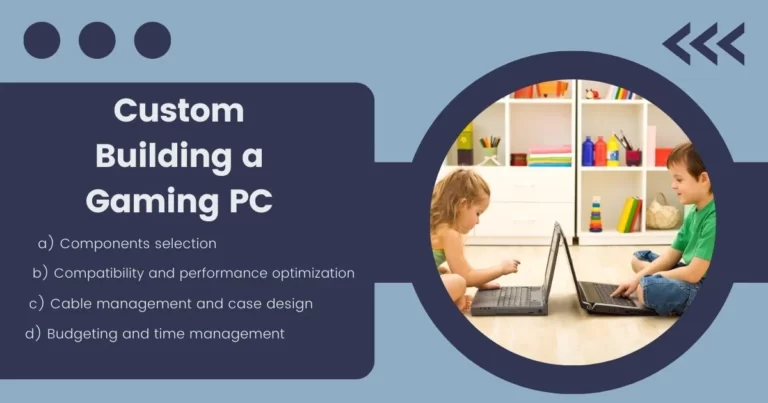
a) Components selection
Choosing the right components is crucial when building a custom gaming PC. Start by determining your needs and priorities, such as performance, aesthetics, and budget. Key components to consider include the processor, graphics card, RAM, storage, power supply, and motherboard. Also, don’t forget about cooling solutions, as maintaining optimal temperatures is important for your gaming PC’s longevity.
b) Compatibility and performance optimization
Ensuring compatibility between components is essential to prevent issues and optimize performance. Check the compatibility of your CPU and motherboard, as well as the RAM type and speed supported by the motherboard. Make sure the power supply has enough wattage to support your chosen components and that the graphics card and other components fit within your chosen case. Finally, verify that your cooling solution is sufficient and compatible with your case and components.
c) Cable management and case design
Proper cable management not only improves the appearance of your gaming PC but also enhances airflow and cooling efficiency. Invest in a case with good cable management options, such as routing channels and cutouts. Use zip ties or Velcro straps to organize and secure cables, and consider using custom or sleeved cables for a cleaner look.
d) Budgeting and time management
Building a custom gaming PC can be expensive, so it’s important to set a realistic budget that balances your needs and expectations. Prioritize components that have the most impact on performance, such as the processor and graphics card, and allocate a higher percentage of your budget towards them. Don’t forget to factor in the cost of peripherals, such as a monitor, keyboard, and mouse. Additionally, plan your build timeline and set aside enough time to assemble, troubleshoot, and optimize your gaming PC to ensure a smooth and enjoyable building experience.
Building a custom gaming PC allows you to handpick each component, ensuring compatibility, performance optimization, and the desired aesthetic. It also provides the opportunity to balance your budget and allocate resources according to your preferences. Proper cable management and case design can further enhance the look and function of your custom-built PC.
XIV. Gaming Laptop and Desktop Maintenance

a) Cleaning and dusting
Regular cleaning and dusting are essential to maintaining the performance and longevity of your gaming laptop or desktop. Dust accumulation can lead to higher temperatures and decreased performance. Use compressed air to clean dust from vents, fans, and heatsinks. For laptops, ensure the device is turned off and unplugged before cleaning. For desktops, you may need to open the case to access internal components.
b) Software updates and drivers
Keeping your software up-to-date is crucial for optimal performance and security. Regularly update your operating system, drivers, and any gaming-related software, such as your GPU control panel or game clients. Updated drivers often provide performance improvements, bug fixes, and new features that can enhance your gaming experience.
c) Overclocking and undervolting
Overclocking involves increasing the clock speed of your processor, graphics card, or RAM to achieve better performance. While this can provide a noticeable boost, it may also increase power consumption, heat, and potentially decrease the lifespan of your components. Undervolting, on the other hand, is the process of reducing the voltage supplied to your components, which can lead to lower power consumption and temperatures without sacrificing performance. Both overclocking and undervolting should be done with caution and may require additional cooling solutions.
d) Backup and recovery
Regularly backing up your important files and settings is essential to protect your data from loss or corruption. Utilize cloud storage services, external hard drives, or network-attached storage (NAS) devices to create a backup of your files. Additionally, create a system image or recovery point for your operating system, so you can quickly restore your system in case of software or hardware issues. Establish a backup schedule to ensure your data is always up-to-date and protected.
Maintaining your gaming laptop or desktop is essential for ensuring optimal performance and longevity. Regular cleaning, dusting, and updating software and drivers can help prevent issues and improve the overall gaming experience. Overclocking and undervolting can also help maximize performance, while regular backups and data recovery strategies can safeguard your valuable data.
FAQ
A gaming laptop is specifically designed for high-performance gaming, featuring powerful processors, dedicated graphics cards, and faster RAM. Regular laptops, on the other hand, are designed for everyday tasks, like browsing the web, watching videos, and creating documents, and usually have less powerful hardware.
A gaming laptop can replace a desktop for gaming if it has adequate hardware to run games smoothly. However, desktops usually offer better performance, upgradability, and customization options than laptops.
Key factors to consider include the processor, graphics card, RAM, storage, display, cooling, and build quality. Your priorities will depend on your specific gaming needs and budget.
The amount you should spend depends on your gaming requirements and budget. For casual gamers, a budget of $800 to $1,200 should suffice. For more demanding gamers, a budget of $1,500 to $2,500 may be necessary. High-end gaming setups can cost upwards of $3,000.
Gaming laptops and desktops typically last between 3 to 5 years, depending on the quality of the components and how well they are maintained. Upgrading individual components can extend the lifespan of a gaming deskto
Gaming desktops are generally easier to upgrade than gaming laptops. Desktops offer more space for additional components and better compatibility with various hardware. Laptops have limited upgradability, usually restricted to RAM and storage.
If you’re comfortable with assembling a PC, building your own can be more cost-effective and allows for greater customization. If you prefer a hassle-free experience or have limited technical knowledge, a pre-built gaming PC might be a better choice.
There is no definitive “best” brand, as preferences vary. Some popular gaming laptop brands include ASUS, MSI, Razer, Alienware, and Acer. For gaming desktops, consider brands like Alienware, Origin PC, CyberPowerPC, HP Omen, and Maingear.
You can improve performance by updating drivers and software, optimizing in-game settings, overclocking components, investing in better cooling solutions, and upgrading hardware when necessary.
Some essential gaming accessories include a high-quality monitor, keyboard, mouse, headset or speakers, and a comfortable chair. Additional accessories to consider are a gaming controller, mouse pad, and cable management solutions.


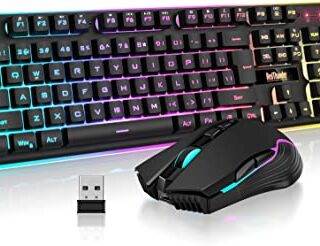
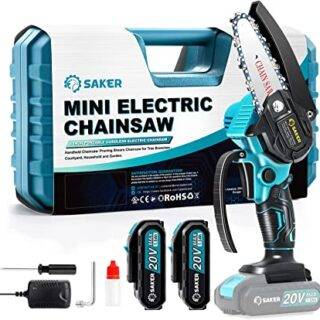
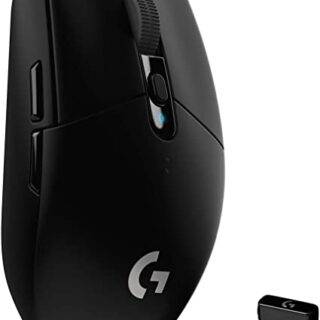
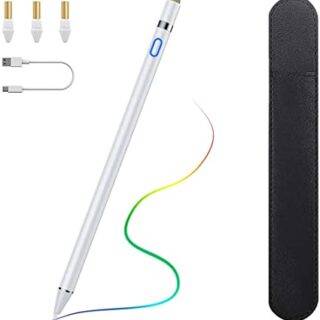





Leave a Reply